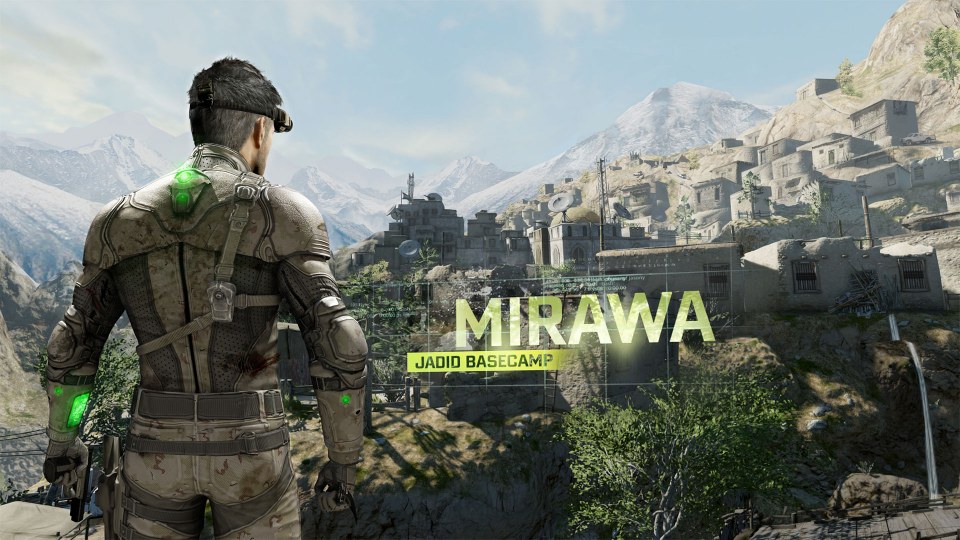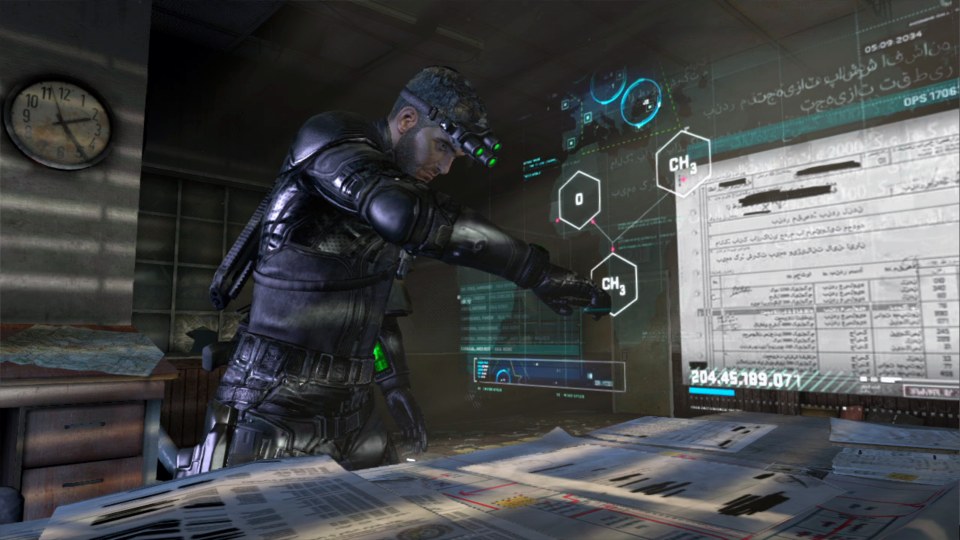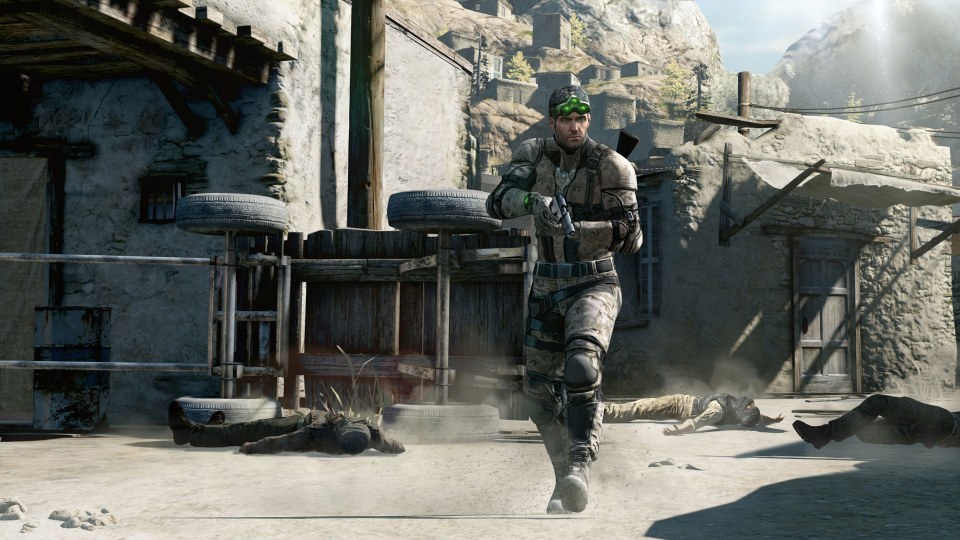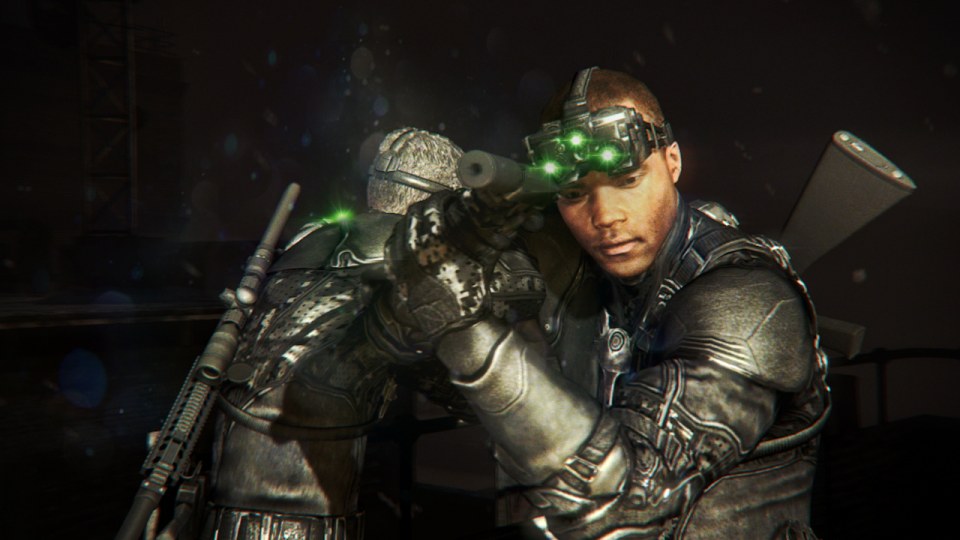There seems to be a trend in game development lately to make everything more action oriented and cinematic. We’ve seen it with Resident Evil, we’ve seen it with MMORPGs like Tera and Neverwinter, we’ve even seen it with rhythm games like Harmoknight (ok, maybe not the cinematic part, but still). Understandably, long time fans of a series (or genre) get upset when this AAA streamlining comes at the expense of the subtleties that drew them in to begin with.
The Tom Clancy’s Splinter Cell series fell into a similar predicament with 2010’s Splinter Cell: Conviction. It was well received by critics – but it polarised fans. Some liked the improved gunplay and Uncharted inspired set-pieces, while others lamented the paring back of the stealth elements and gadgetry that were the hallmark of the series.
Enter Tom Clancy’s Splinter Cell: Blacklist. This new entry basically takes everything that worked in Conviction, gets rid of what didn’t, and brings back the sneakiness and gadgetry that fans missed. The result is a game where action and stealth support and complement each other perfectly, giving you an unprecedented range of options to deal with any given situation.
In Blacklist, our greying hero Sam Fisher once again has to stop a terrorist threat – this time, a shadowy group calling themselves the Engineers. The terrorists are demanding that the United States bring an end to their international military interests and withdraw all troops posted overseas, with scheduled weekly attacks as long as the US Government fails to comply. It’s a fairly standard espionage thriller plot; you’ll probably already know if you like this sort of story, and Blacklist doesn’t set out to change your mind either way. That’s not to say it’s bad by any means. It’s interesting, serves the gameplay well, and it’s refreshing to see strong female characters in this sort of story – just don’t expect anything life changing.

The mantra behind Blacklist seems to be “let the player play how they want”. The slick cover shooter controls from Conviction are back, as well as the gadgets and use of shadows from Fisher’s earlier adventures, allowing you to approach each mission as you choose: guns blazing, using distractions to gain the upper hand, or eluding enemies altogether.
Having said that, the game occasionally turns its back on this flexibility with levels that force you to play a certain way. A few parts of the game will force you to play stealthily by giving you a ‘Game Over’ screen if you get spotted, while others inexplicably turn the game into a generic first person shooter for a brief period. There doesn’t seem to be any real reason for this kind of pigeon-holing, and it flies in the face of everything that otherwise makes the game so damn good. Fortunately, levels like these are few.
The broad range of tricks up your sleeve allow for some very creative solutions to problems, especially once you start combining different playstyles. Struggling to get past a swarm of guards near the goal? Loudly take out some foes in a different part of the map, making your presence known, then use your stealth skills to slink away. Now you’re free to waltz to the goal while the guards are off looking for you where you were last seen.

Which brings me to another area in which Blacklist excels – enemy AI. At first, they look more or less like your regular stealth game enemies, meticulously patrolling their designated routes, occasionally stopping to investigate a disturbance. Once they get wise to your presence however, they show their true intelligence, working together to storm your perceived location, and coordinating search efforts once they realise you’ve buggered off from behind the box they were shooting at.
Enemies don’t ever seem to forget about you and go back to patrolling like they do in other games. Instead they focus on hunting you down, making for some incredibly dynamic scenarios. Getting spotted has real consequences because guards become somewhat unpredictable, but the game also gives you a big enough toolset to get out of any sticky situation.
Level design is arguably one of the most important elements of a stealth game, where your environment is often your best weapon, and sure enough, Blacklist nails this too. Objectives are linear, but your options from getting from one to the next are anything but. Each level has a myriad of paths to get where you’re going, each with its own quirks and challenges. The level design reminds me a lot of the first two Tenchu games; if you haven’t played them, just know that this is pretty high praise. On top of that, the globetrotting nature of the story allows for sneaking around some incredibly diverse locales, from Government facilities to remote mountain villages, and everything in between.

The levels are beautifully realised, and if you’re anything like me, you’ll find yourself exploring every corner of some maps just to see everything there is to see. You’ll be well rewarded for doing so, with the attention to detail creating some stunning views, but you’ll also run into a few flaws that you might not otherwise find – namely, invisible walls. A lot of games have figured out ways around this by now, so it’s sad to see a game that is otherwise so stunning falling back on this. It’s not a big deal by any means, but they do have a tendency to snap you out the immersion that the rest of the game does such a good job of creating.
Fans of the Spies vs. Mercs multiplayer mode that was missing from Conviction will be glad to hear that it’s back in all its glory, and now has a four vs four mode as well as the classic two vs two, as well as a bunch of new maps. If multiplayer modes are your thing, there are many hours of fun to be had here, and the mode is well supported by things like daily challenges. You also have a large number of co-op missions which can be played either online or with two-player split-screen.
Unlike a lot of games, the singleplayer and multiplayer missions are all accessed from the same mission select map, which makes switching between modes seamless. If you want to take a quick break from Spies vs. Mercs to try get a new high score on one of the single-player missions, it’s as easy as just selecting a different mission after a match. Of course, you can do this in other games too, but the way Blacklist has everything readily available on one screen makes a strong case for abandoning the idea of a separate multiplayer mode, at least for games like this.

Blacklist’s presentation and graphics are pretty impressive throughout, pretty much what you’d expect this late in a console generation. The user interface is clean and intuitive, environment designs are stunning, and unsurprisingly, the dynamic lighting effects are top notch. I did find some of the texturing on character faces to look a bit odd – it might be a bit of an uncanny valley thing – but nothing that really distracts from the game. Some were concerned about Michael Ironsides no longer voicing Fisher, but Eric Johnson does a fine job, and the quality of voice acting overall is excellent.
Despite a few minor flaws here and there, Splinter Cell: Blacklist is a stellar game, especially in a market that’s saturated with with generic shooters. The melding of Conviction’s third person shooter elements and more traditional Splinter Cell gameplay are more than the sum of their parts here. No doubt about it, this is the definitive Splinter Cell experience. I’d even go as far as to say it’s the best stealth game of this console generation. Sorry, Kojima.